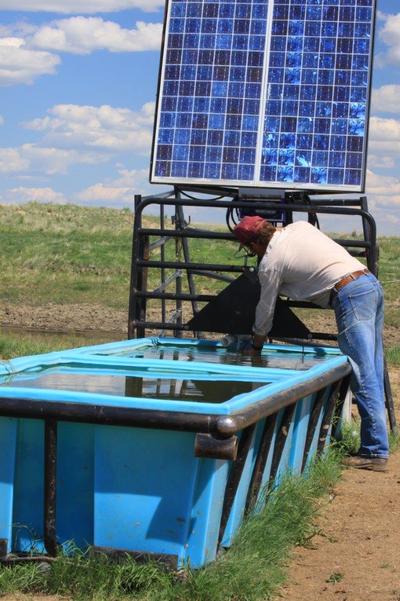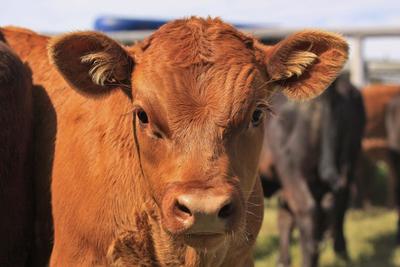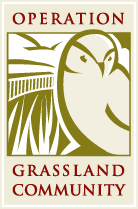News
To Grill or not to Grill: Musings on Sustainable Beef

June 2015
When it comes to the topic of sustainable beef production, there are no shortage of opinions.
Often centered on environmental effects, the loudest voices tend to heavily land in two camps 1) Beef production provides great ecological benefits or, 2) Beef production is harmful to the environment. Both camps are correct, although neither in its entirety. (And both could benefit from a mutual sit-down over a pint or two). There have been countless articles—both research and popular—dedicated to the facts, figures, and stats of beef production and its effects on water, soil, biodiversity, carbon sequestration, and greenhouse gas emissions.
The consensus? It’s complicated.
Regardless of one’s position on the spectrum, however, the reality is that beef is here to stay. Alberta beef is some of the best in the world; not only is it a key economic driver, but it holds potential for grassland ecosystem health and maintenance. Therefore, it is important to work within that reality—to embrace the potential for environmental enhancement and strive for improvement. But as an average person, it is easy to feel disconnected from the bigger sustainability picture, save for our role as “consumer” at the end of the value chain. Therefore, we perhaps are not as invested as we might be.
The Consumer Role, Reinvented
As consumers, where do we fit into the sustainability equation? Do we stop at the grocery store to grab steak for dinner, thereby providing economic support to an industry that does have redeeming environmental qualities, or, do we subscribe to a vegetarian diet to make a statement about the negative impacts of livestock production, and create pressure for producers to improve? While certainly personally impactful, actions like these don’t entirely address the issue. This is because working towards sustainability in any industry necessitates an approach that includes not only environmental but also economic and social considerations. Like the adage of the 3-legged stool, all three components are necessary for the stool to stand. The failure to market a message from all perspectives essentially removes true sustainability from the equation, and—regardless of intent—often creates divide and mistrust. (One only needs to read the back-and-forth comments on any Meatless Monday article to see this!)
So, how is greater understanding and a more holistic view to be created? In terms of consumer attitudes regarding sustainability within the beef industry, “most misconceptions are created by [industry] not having the conversations with those concerned in advance of them casting their decision,” says Cherie Copithorne-Barnes—a 4th generation Albertan rancher who chairs the Canadian Roundtable for Sustainable Beef (CRSB) Steering Committee. Generally, consumers take in information about a product after it has been produced, and then act at the point of purchase. Too seldom do we [consumers] incorporate ourselves at the beginning of the production process. And too seldom are we invited to.
But, whether we buy meat or not, we have a role to play in how our landscapes are managed, and so have a stake in the entire beef value chain. This role goes beyond purchase and consumption. One doesn’t have to buy meat in order to understand the benefits of supporting a grass/grazer system. Similarly, we can recognize that decreasing one’s hamburger intake isn’t the only way to curb greenhouse gas emissions from cattle. Certainly the issue is complex, but one need not be pro- or anti-beef in order to be pro-community building, pro-healthy watersheds, pro-biodiversity, and pro-economic viability.
Here are some suggestions to get you started:
- Learn about and understand different methods of production, what works for you (or doesn’t) depending on your value system, and ask yourself: “How can I help support improvements to that system and the producers behind it?” To help with this, familiarize yourself with the work that’s being done on both national and global scales regarding sustainable beef. Have a question or comment? Let them know! Don’t be afraid to ask questions and expect transparency. But do so respectfully.

- Support on-the-ground sustainability initiatives. Ranchers work hard behind the scenes to take care of the land. They have a personal economic interest in doing so, but they also make decisions that may have little to no direct impact on their economic return, but a huge impact environmentally. For instance, many producers allow land access for conservation research, especially for species-at-risk. Ranchers spend time and resources on wildlife-friendly projects, such as installing nesting platforms to encourage Ferruginous Hawk breeding, replacing barbed wire with smooth to assist in pronghorn migration, or applying reflectors on fence lines to prevent sage grouse collisions. As many of these projects are partnerships with various conservation organizations, there are many opportunities to be involved in directly supporting these initiatives.
- If time and travel allow, engage with producers during events that encourage dialogue between members of the entire beef value chain, from farm to fork. For example, plan a summer road trip around Open Farm Days. Wander through the Cattle Trail at the Calgary Stampede, which includes a myriad of organizations from industry to educational to conservation. Events like these allow for direct interaction between those on all levels of the beef production chain, and provide opportunities for education, networking, and collaboration.
Pint of Peace
Sustainable beef production does mean making sure current systems are held accountable to clear environmental outcomes, but also that the individuals, families, and communities that are dependent on beef production stay economically viable.
 That pint of peace I spoke of before? Groups are sitting down to discuss and implement improvements within the industry. With the advent of the Global Roundtable for Sustainable Beef (GRSB) and associated national roundtables in countries including Canada, USA, and Brazil, real conversation is happening. Canada’s own roundtable (CRSB) already includes 47 members and observers since its 2014 inception. Finding consensus on “sustainability” isn’t always easy, especially when you consider that the roundtable contains members as diverse as McDonalds and Loblaws to WWF and Nature Canada, but it is possible. “From the outside, one would wonder how much we have in common,” says Fawn Jackson, Executive Director of the CRSB. But the truth is, “we have 90% of things in common. Being able to have discussions that everyone can participate in has been a really big success. We have brought sustainability into one conversation,” rather than having the same conversation over and over again in separate, non-collaborative settings.
That pint of peace I spoke of before? Groups are sitting down to discuss and implement improvements within the industry. With the advent of the Global Roundtable for Sustainable Beef (GRSB) and associated national roundtables in countries including Canada, USA, and Brazil, real conversation is happening. Canada’s own roundtable (CRSB) already includes 47 members and observers since its 2014 inception. Finding consensus on “sustainability” isn’t always easy, especially when you consider that the roundtable contains members as diverse as McDonalds and Loblaws to WWF and Nature Canada, but it is possible. “From the outside, one would wonder how much we have in common,” says Fawn Jackson, Executive Director of the CRSB. But the truth is, “we have 90% of things in common. Being able to have discussions that everyone can participate in has been a really big success. We have brought sustainability into one conversation,” rather than having the same conversation over and over again in separate, non-collaborative settings.
Copithorne-Barnes notes that a project of the roundtable is to present “the way beef is produced from start to finish in an open and transparent manner [in order to] figure out what type of infrastructure is truly needed in order to establish a verified sustainable beef model”. To tackle this challenge, the CRSB is focused on a benchmarking study which includes a Life Cycle Assessment of beef production, to assess environmental impacts within the context of current industry practices. From there, the roundtable will be better able to determine next best steps in industry improvements, and communicate that action plan to the public.
The benchmarking study is just one example of a plan put into action. The beauty of multi-stakeholder groups like the CRSB and larger GRSB is that although they include organizations that often sit at opposite ends of the table, at least they’re at the same table. This approach is translatable to our daily lives. Although it’s easiest to talk with those who have the same view as us, it’s when we engage in respectful dialogue with those holding differing perspectives that meaningful change can occur. Finding the 90% of common ground can be the catalyst to tackling that last 10% as we work towards collaborative solutions regarding sustainable beef.
Looking Forward
Environmental sustainability within the beef industry is possible, but only within the context of economic viability and social responsibility can it be truly effective. Consumers have the ability to influence this at all levels of the value chain, but the success of this is two-fold; it’s the consumer’s responsibility to take action, but it is the industry’s responsibility to ensure public involvement can happen. Transparency, collaboration, and respect are all key drivers in this.
At OGC, our mandate is to seek win-win solutions between the economic viability of a ranchers’ operation and the ecological health of the land on which that rancher depends. The economic, social, and environmental pillars of “sustainable beef production” is at the forefront of that vision. We are here to provide our services to ranchers both on-the-ground and through knowledge exchange, and are grateful when they want to work with us. But we are also passionate about engaging the consumer community, shedding light on the importance of grazers to the grasslands while exploring the pros, cons, and improvement potential of various industry practices. Sustainability is not only good for our producers, the land they work on, and the wildlife that land supports, but also for the consumer who is benefiting from the subsequent ecological goods and services of that land base.
…

